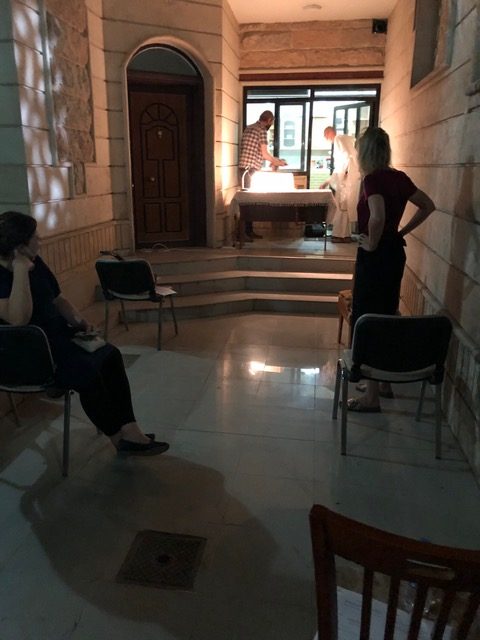In this essay, UNAOC Fellow Sarah Markiewicz, from Australia, speaks about her time in Iraq, where she would regularly attend a mass with a small group of Christians and the significance of the ritual.
By Sarah Markiewicz, UNAOC Fellow
I was living in Iraq when the first lockdown began, in the Kurdish city of Erbil in the north of the country. Northern Iraq has a plethora of religious communities, including many Christian denominations. Although there are many churches in Erbil, services were mostly held in the liturgical or local languages, which were inaccessible to me. I did visit them, but more out of curiosity to learn about different expressions of eastern Christianity than out of religiosity.
There was a French priest in Erbil who would perform an English mass upon request. About once a month, a small group of us would gather in the chapel of a Dominican monastery. One person in the group would accompany the service with her guitar. It was a lovely spiritual escape, and we would often share a meal after the service. Having a service in my own tongue felt like an important and familiar anchor, where I could reconnect with myself and my spirituality. It allowed me to be fully present in Iraq and remain self-aware and grounded in these new surroundings.
When the lockdown began in March, places of worship were closed, and group gatherings stopped. Our services came to an end and, at one point, became a fond, distant memory. From March until September, our small church group remained in contact only via WhatsApp. We celebrated Easter in lockdown, listening to sermons over the internet, reading the passion of Christ each for him or herself.
I started to realize how much I missed the community and the physical presence of the Church. Its smells, how my mind responded to entering its space, all the automatisms which come when the mass begins, the low hum when we would all recite the Lord’s Prayer in unison, each in his or her mother tongue. I missed giving one another the sign of peace. I missed looking to the altar and seeing a crucifix. I missed singing together. I missed the final blessing.
When I was due to leave Iraq in September, Erbil had opened up a bit. We reached out to the priest to ask if there was any chance to do another small ceremony. The Church was still closed, but he agreed to perform a mass outside if we were appropriately spaced. A friend offered his garden, and he measured out the seating to determine how many people he could accommodate. Besides the priest, we were six, seated in three rows of two seats. The priest was at the front with a small desk for an altar. All of us wore masks, and we relied on light from the kitchen and some candles. Halfway through the Liturgy of the Eucharist, an ice-cream truck drove through our street, playing a jingle at high volume. I think even the priest was amused. In the end, we drank tea and juice, at a safe distance. The priest gave me a blessing for a safe onward journey.
Although the church was missing, that final mass will remain with me for a long time. For Christians, a church is both a physical space and a community. This year, that physical space was closed for the safety of the congregants. But we managed to maintain the community of believers and recreate for ourselves a safe space to worship.
I have not been inside a church since the pandemic began. Still, I am sure the next time it is possible, I will remember us standing in my friend’s garden, arms outstretched, ensuring our fingers did not brush those of our neighbor before we could take a seat with a good conscience.
Share Your Own Video
Share your story today and make your voice be heard! Shoot a short video (1 to 3 minutes) with your smartphone and tell us about your personal connection to a religious site (Why does it
matter to you? Why is it important to protect it?). Post it on social media and tag @forSafeWorship or submit it using the form below.

